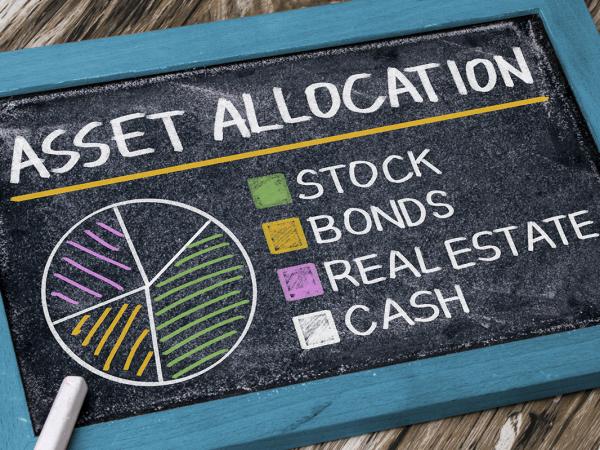Personal savings allowance
The personal savings allowance is a nil-rate band of tax which applies to taxable savings income. It is £1,000 for most basic-rate taxpayers. The savings income that falls within the personal savings allowance is taxed at 0%.

Content on this page:
Introduction
As we explain at Tax on savings income, the personal savings allowance is one of three main allowances and nil-rate bands which can apply to savings income.
The personal savings allowance applies after the personal allowance and the starting rate for savings, so when you are working out whether you owe tax on your savings income you should consider these first.
The personal savings allowance does not reduce the amount of your taxable income, nor is savings income falling within it ‘exempt’ from tax. Instead, it is a nil rate band of tax for savings income.
This means that income that is covered by your personal savings allowance still counts as taxable income and therefore still uses up your basic rate band (or your higher rate band) of tax.
This can affect the rate of tax you pay on savings income that exceeds your personal savings allowance, the rate of tax you pay on dividend income, and the level of the personal savings allowance you can get – see the heading below.
The following example shows how the personal savings allowance works in a basic scenario.
Amount
Generally, if your total adjusted net income is less than £50,270 (for 2024/25) then you will have a personal savings allowance of £1,000. Adjusted net income (as explained on GOV.UK) is your total taxable income less certain deductions like gross gift aid donations or gross pension contributions.
Strictly, to work out the amount of your personal savings allowance, you need to determine whether or not you have any income which is charged to tax at the higher rate (or additional rate). In considering this question, you must ignore all the following:
- the effect of the personal savings allowance itself
- the effect of the dividend allowance
- whether you are a Scottish or Welsh taxpayer
If you then do not have any income which is charged to tax at the higher rate (or upper dividend rate), the amount of the personal savings allowance is £1,000. This will always be the case if you are eligible for the standard personal allowance and your total taxable income is less than £50,270 (for 2024/25). You need to include in the calculation of total taxable income any savings income taxable at a nil rate because of the personal savings allowance, and any dividend income taxable at a nil rate because of the dividend allowance.
If you have income which is charged to tax at the higher rate or upper dividend rate (or would have been, ignoring the personal savings allowance, dividend allowance, and whether you are a Scottish or Welsh taxpayer), and not the additional rate or additional dividend rate, then your personal savings allowance is £500.
The following example shows how the personal savings allowance is calculated and how the amount of income covered by the personal savings allowance still uses up a person’s basic rate band.
If you have income which is charged to tax at the additional rate or additional dividend rate, then you are not eligible for a personal savings allowance.
Application
The personal savings allowance applies to savings income. For examples of the types of income included see Tax on savings and investments.
Bank account ‘rewards’
The personal savings allowance applies only to savings income as defined by law. This means that even if you receive income that you think of as savings income, if it is not within the definition, it is not eligible for the personal savings allowance. Equally, it is not eligible for the starting rate of savings.
The situation can be very confusing in relation to certain types of ‘reward’ accounts which banks may offer. If you receive any interest (whether on the reward account or on a different account), you should receive that gross and it will be eligible for the personal savings allowance. The treatment of ‘rewards’ however depends on the nature of the reward. It is very possible that you will receive the reward net of 20% tax. In addition, the reward may not be eligible for the personal savings allowance. There is often limited guidance available from the bank, and the nature of the reward can vary from account to account.
Please note that we are talking about regular cash rewards here as opposed to cash incentives for people switching their accounts or cashback on certain types of spending, which are generally not taxable as they are considered a 'discount' rather than a reward.
If you have a reward account, to check the tax position, you need to find out the following information:
- the type of reward
- whether the bank pays you the reward gross or net of tax (and if net, how much tax is deducted at source)
- whether the reward is taxable income
- whether the reward is potentially eligible for the personal savings allowance, depending on your circumstances
There are three main possible tax treatments, depending on the type of reward:
- If the reward takes the form of interest (that is, a rate based on the account balance), it is savings income and eligible for the personal savings allowance. Banks should pay this to you gross without deducting 20% tax at source, but it is still taxable income.
- If the reward takes the form of a cash reward (not related to the account balance), for say depositing a certain amount per month, this is not savings income, but is probably an ‘annual payment’ (applicable even if the reward is paid monthly). Banks must deduct tax at 20% before paying you the cash reward, and the gross amount of the cash reward is taxable. Since annual payments are not savings income, these types of reward are not eligible for the personal savings allowance (or the starting rate for savings). If you are not liable to tax you can reclaim any tax deducted by completing an R40 form or on your self assessment tax return. If you are a higher-rate taxpayer you would need to pay the extra amount to HMRC, for example, via a PAYE coding adjustment or through your tax return.
- If the reward takes the form of a cash reward (not related to the account balance) and there is a fee for the account, the reward does not meet the conditions for an annual payment. It is still taxable, however as a 'miscellaneous payment'. Banks do not have to deduct tax before paying you the cash reward, so you receive these rewards gross and the gross amount is taxable. These types of reward are not savings income, so they are not eligible for the personal savings allowance (or the starting rate for savings). If you are a basic, higher-rate or additional-rate taxpayer you would need to pay any tax due to HMRC, for example, via a PAYE coding adjustment or through your tax return.
Cash ISAs
If you have a cash individual savings account (ISA), the interest you get is tax free. ISA income does not use up your PSA.
NS&I products
There are also a number of NS&I products, which are expressly free of tax, for example, fixed interest and index-linked National Savings Certificates and Premium Bonds. Income or prizes from these products do not count towards the PSA either.
You can find more information about NS&I products from NS&I.
Joint accounts
Where you earn interest on joint accounts, each account holders is entitled to a personal savings allowance, which they can use against their share of the interest.
Further examples
The below examples demonstrate how the personal savings allowance works in a variety of scenarios.
We start by looking at how the personal savings allowance interacts with the starting rate for savings.
The next example demonstrates how to work out your tax if your only taxable income is savings income, applying the personal allowance, starting rate for savings and the personal savings allowance.
We now look at three different examples of taxpayers with both earnings and savings income. These examples demonstrate how to work out your tax if your taxable income is both earned income and savings income, applying the personal allowance, starting rate for savings and the personal savings allowance.
Further information
There is information about the personal savings allowance, including a simple example, on GOV.UK.



